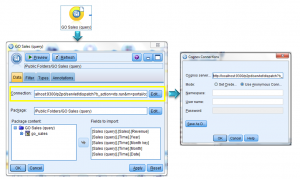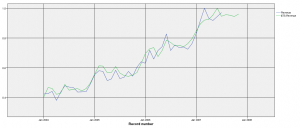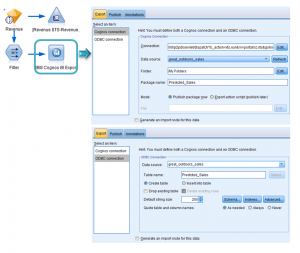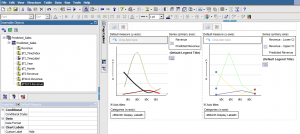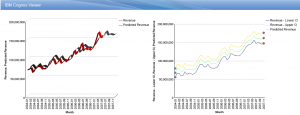Suppose you’re trying to build a model to predict respondents, and in your data set, about 3% of the population will respond (target = 1). Without applying any specific analysis techniques, your prediction results will likely be that every record is predicted as a non responder (predicted target = 0), making the prediction result insufficiently informative. This is due to the nature of this kind of information, which we call highly imbalanced data. Read more
Tag Archive for: IBM SPSS Modeler
This year at IBM Insight 2015, Ironside had the unique opportunity to tell one of our most compelling recent customer stories: how Manchester PD used Ironside’s IronShield predictive policing platform to implement some highly effective crime reduction strategies. Greg Bonnette, our VP of Strategy & Innovation, delivered the presentation on behalf of Manchester PD, who IBM had selected as a presenter, and highlighted the components of IronShield and the results that Manchester PD is getting out of it. Read more
On June 17th, Ironside hosted a Customer Analytics for the Informed Executive webinar exploring how advanced analytics can help businesses attract and retain customers. This webinar reviews a variety of data science methods that can utilize extensive existing data to provide guidance on many functional areas within a company. Read more
This article is based upon an interview with Monique Dozier, Assistant Vice President of Advancement at MSU.
In 1989, Howard Dresner, a leading analyst for Gartner, coined the term “business intelligence.” In 1994, this thought leader, strategy advisor, and former Gartner Research Fellow, made the following powerful prediction: Read more
Predictive Analytics 101
Business intelligence focuses on the identification and understanding of events that happened in the past; that is “what’s happened?” and “why has it happened?” Business imperatives and other constraints are increasingly driving organizations to look forward and use their data to ensure decisions that are being made today will lead to wins in the future. Predictive analytics has often been viewed with hesitation and intimidation and seen as only relevant to statistical specialists, but with the advent and evolution of the IBM SPSS solutions, the power of predictive analytics can be harnessed by a much broader group of users. This newsletter article describes what predictive analytics is, how it is used, when it is used, and how to integrate it into your organization. Read more
On Febuary 22, 2012 Ann Winblad, a Silicon Valley titan indicated that “data is the new oil” and “predictive analytics is the next big thing”
Today, most organizations use business intelligence to understand what and why things happened in the past. Business imperatives are increasingly driving organizations to look forward and use their data to improve decision accuracy. This is the promise of predictive analytics, yet many organizations believe heavy statistical skill sets are required before taking on this next phase of business analytics. Guided wizards and other SPSS usability advances make predictive analytics available to a much broader group of BUSINESS USERS TODAY than most realize. Gartner’s CIO study for the past 3 out of 5 years rates business intelligence and analytics as the #1 priority. Said another way, those with predictive analytics skill sets will be in high demand for many years to come. Read more
Smarter business decisions and a large return on investment can be among the key benefits of a predictive analytics solution. But all solutions are not created equal.
That’s why it’s critical not to miss our complimentary IBM SPSS Data Mining Workshop hosted by the Ironside Group and IBM. You will get hands-on experience with Modeler software to help you better understand the distinctive value of its easy-to-use, rapid-prototyping, predictive modeling capabilities. Read more
IBM SPSS offers a variety of integration options with other enterprise solutions, i.e., enterprise data warehouses, file systems, and business intelligence applications. In this article, we specifically focus on the integration with the IBM Cognos BI environment. As most of you are aware, IBM SPSS leverages the power of predictive analytics by allowing the user to examine the current state of their business, while at the same time providing a view of the future using advanced analytics techniques. With the use of the IBM Cognos BI integration point, the results are immediately available for IBM Cognos reporting, allowing for easy distribution to broad user communities.
In our previous article, we described the general workflow on how to import and export IBM Cognos packages from IBM SPSS Modeler. In this article, we will provide a simple case study using the standard IBM Cognos sample set to further illustrate the above mentioned integration.
Note:
-The integration is only available in IBM SPSS Modeler version 14.1 or higher.
-The supported IBM Cognos environments are version 8.4 and higher.
Providing Data to IBM SPSS from IBM Cognos
The IBM Cognos BI source node enables data miners to read data directly from IBM Cognos Framework Manager, including relational, dimensionally-modeled relational (DMR), and OLAP sourced packages.
In this case study, we select the Go Sales (query) package from IBM Cognos samples and use the following items from the query subject as our source data:
Go Sales (query)
- Sales (query)
- Sales
- Revenue
- Time
- Year
- Month Key
- Month
- Date
- Sales
Before choosing a Framework Manager package to import the data, the user needs to establish a connection to the IBM Cognos server by providing the dispatcher URL and user credentials.
Conduct Data Mining Analysis in IBM SPSS Modeler
The source data we bring in from IBM Cognos contains revenue data for years 2004-2007. The objective of this study is to use advanced modeling techniques to discover trends behind the revenue data and predict future revenues. The following stream in IBM SPSS Modeler uses time series analysis to analyze the patterns in the monthly historical data and project those patterns to determine a range within which future values of the series are likely to fall.
In this example, we extend the forecast of the expected revenue to the next four time periods. The following output from IBM SPSS is a time series graph and shows the predicted (green line) vs. actual (blue line) revenue for each month between Jan, 2004 – Jul, 2007 and the projected revenue for Aug – Nov 2007.
Exporting IBM SPSS Predictive Results into IBM Cognos BI
The end results from an IBM SPSS Modeler stream can be exported back to the IBM Cognos BI environment, including both the transformed and scored data based on predictive modeling. In this case study, we will export the scored dataset of time series analysis into a database table called “Predicted_Sales” and generate an IBM Cognos package on the Cognos server reflecting the new database table.
Once the export is complete, we could use IBM Cognos Report Studio to create a visual report based on the exported data, including the predictions and confidence interval values for consumption by a broad user base.
Through this case study, we showcase how a user can combine the predictive analytic capabilities of IBM SPSS Modeler with business intelligence features of IBM Cognos BI. For any additional questions regarding the integration and its implementation, please contact us at the Ironside Group.

